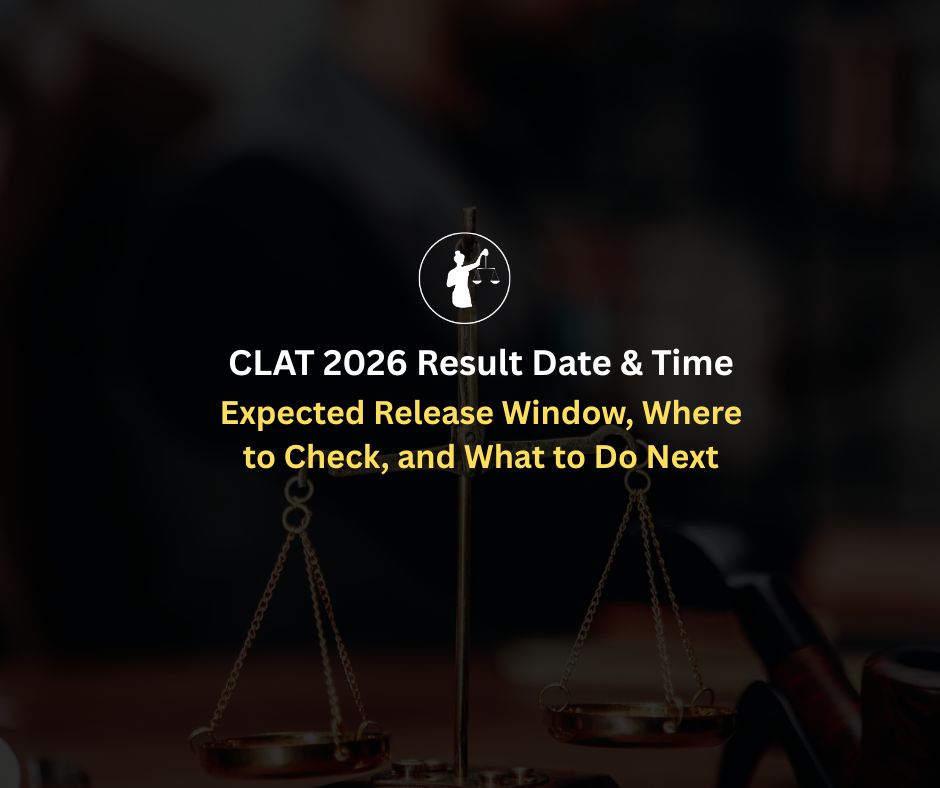The National Law School Admission Test (NLSAT) is one of the most sought-after exams for aspiring law students. As competition intensifies each year, the cut-off becomes a critical determinant of success. If you're preparing for the NLSAT, understanding the cut-off system is essential for devising an effective strategy.
Things You should know about NLSAT Cut-offs
The NLSAT cut-off is a crucial benchmark that determines your chances of progressing in the admission process. However, the cut-off is not fixed and varies each year based on several key factors such as:
If the paper is deemed tougher in a particular year, the overall performance of students may decline, leading to a lower cut-off. Conversely, an easier paper can push the cut-off higher.
The more students that take the exam, the more competitive it becomes, which can also impact the cut-off threshold.
The cut-off is generally expressed in two ways: percentile or marks.
Percentile is a relative measure of performance that indicates how well a candidate has performed compared to others. For example, if you are in the 90th percentile, it means you have scored better than 90% of the test-takers.
In previous NLSAT exams, the cut-off for general category candidates has
typically ranged between 85-90 percentile.
This range implies that only the top 10-15% of candidates make it to the next stage of the admission process.
Therefore, even if the absolute marks of candidates vary from year to year due to the difficulty of the paper, the percentile system ensures that the top-performing students are selected.
While the cut-off percentile remains relatively stable, the actual marks required to achieve that percentile can fluctuate depending on the overall performance of students in that particular year.
The NLSAT uses a unique scoring system that combines both objective (MCQs) and subjective (short-answer and essay) sections. The total marks are split between these sections, with each requiring different approaches and skill sets:
Objective Section:
Tests logical reasoning, legal aptitude, and general knowledge.
Subjective Section:
Assesses legal reasoning and analytical writing ability.
Based on past trends:
To be in the 85-90 percentile, candidates typically need to score around 65-70% of the total marks.
This equates to scoring between 65-70 marks out of 100 or an equivalent proportion if the total exam score varies slightly.
For aspirants, this means your goal should be to consistently score above 65% in both sections to be within the safe zone. A solid preparation strategy that focuses equally on the objective and subjective parts of the paper is essential.
The number of available seats is one of the primary factors influencing the NLSAT cut-off. With limited seats offered through the exam, the selection process becomes highly competitive, making it essential for candidates to secure top ranks.
In prestigious institutions like the National Law School of India University (NLSIU), the number of seats is restricted due to the rigorous nature of its programs and the focus on maintaining high academic standards. For the 3-year LL.B. program, NLSIU typically offers around 120 Seats. Given the thousands of applicants who vie for these spots, the competition is intense.
For example:
In the 2024 NLSAT, around 120 seats were available for a large pool of candidates.
This limited seat count significantly raises the bar for the cut-off. With such a narrow window for selection, only the top-performing candidates are likely to make the cut.
The limited number of seats naturally pushes the cut-off higher, particularly for general category candidates. Since the general category encompasses the majority of applicants, the competition within this pool is fierce.
General category cut-offs tend to be higher because a larger proportion of candidates compete for the same number of seats.
As a result, candidates aiming for admission in the general category must rank within the top percentile to secure a place.
Typically, students need to be within the top 10-15% of all test-takers,
making it imperative to score higher than most candidates.
NLSIU, like many other institutions in India, follows affirmative action policies that allocate a certain percentage of seats to reserved categories, including:
Scheduled Castes (SC)
Scheduled Tribes (ST)
Other Backward Classes (OBC)
Persons with Disabilities (PWD)
While candidates in these categories benefit from lower cut-offs, the competition remains strong. The reduced cut-off for reserved categories doesn't imply an easier path—it reflects efforts to promote diversity and equal opportunities in education.
The distribution of seats is often governed by reservation quotas, with a certain percentage allocated to various categories. For example:
Around 50% of the total seats may be reserved for candidates from various categories (SC, ST, OBC, etc.), while the remaining seats are open for general category students.
Even if you don't make it to the initial admission list, the waiting list offers a second chance for many aspirants. Every year, some candidates withdraw their admission, either because they secure admission in another law school or due to personal reasons. This opens up opportunities for candidates who are ranked lower on the list. Understanding how the waiting list conversion works can be a strategic advantage in the NLSAT admission process.
Once the initial admission offers are made based on the cut-off and ranks, candidates who fall just short of these ranks are placed on a waiting list. If any of the initially admitted candidates decline their seat, the waiting list starts moving, and candidates are offered admission based on their rank on the list.
This process can extend for several rounds, especially if a significant number of candidates choose other law schools, opening up seats for those on the waiting list. For aspirants, staying in the race and being patient is key, as the waiting list can convert well after the initial rounds of admission are completed.
In past years, the waiting list for general category candidates has typically seen conversions up to around rank 130-150. This means that if you rank just outside the last admission rank (around 110-120), there’s a high chance that the waiting list will move in your favor, especially if top-ranked candidates opt for other institutions.
The cut-off for NLSAT 2024 has not yet been fully disclosed in terms of the final waiting list conversions.
However, in NLSAT 2023, the last general category waiting list conversion happened at rank 145.
Candidates ranked between 130 and 150 were able to secure admission as spots opened up due to withdrawals or rejections of offers.
In some cases, the waiting list may even convert for candidates ranked as far as 160-170 depending on the number of seats that become available.
For reserved category candidates, the waiting list tends to convert at much higher ranks. This is due to the reserved seat allocation and often a lower pool of applicants compared to the general category.
Specific rank conversions for NLSAT 2024 haven’t been widely disclosed yet, but trends from NLSAT 2023 provide a reasonable expectation that those in higher ranks within reserved categories had chances of admission through the waiting list.
In NLSAT 2023, the waiting list for reserved categories saw conversions up to rank 350 or even beyond. For example, candidates in the Scheduled Castes (SC) or Scheduled Tribes (ST) categories may have secured admission even if their rank was above 300.
This higher conversion range means that if you fall within the top 350-400 ranks as a reserved category candidate, you still have a solid chance of making it through the waiting list, especially as higher-ranked candidates may opt out.
Here’s a table summarizing all four key points about the NLSAT cut-off, last admission rank, waiting list conversion, and seat availability:
This table gives a clear overview of the NLSAT admission trends, including cut-offs, seat availability, and waiting list movement.
Join India's best coaching plus Mentorship program for NLSAT 2025.
NLTI has produced over 30 selections, including AIR 1, 2, 4 & 5 in NLSAT 2024 - the highest by any coaching.
Crack NLSAT 2025: Coaching cum Mentorship + Test Series





